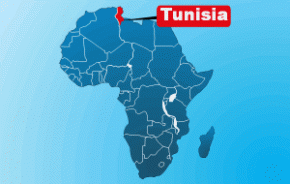
Wednesday, May 24, 2017
Sound Energy has completed the drilling of its third well on the Tendrara concession. The TE-8 well reached a total depth of 3,120 meters.
TE-8 was drilled some 359 meters into the Paleozoic and identified the full series of Westphalian sandstones, which are one of the producing horizons in neighboring Algeria. The sandstones are confirmed to lie in a separate pressure regime to the overlying TAGI play in a large tilted fault block beneath the TE-5 horst and the Lakbir High. Gas shows were encountered over this interval and subsequent petrophysical analysis suggests that these sandstones may be permeable and likely to be producible with mechanical stimulation.
TE-8 also penetrated 114 meters of TAGI I reservoir (approximately twice the thickness of the TAGI I reservoir encountered in wells on the TE-5 horst) with gas shows. The TAGI sands encountered by TE-8 are also confirmed to be at the same reservoir pressure as the previous wells on the TE-5 horst (TE-5, TE-6 and TE-7).
Further wells targeting the Paleozoic on the Tendrara permit are being planned, but are not likely to be drilled prior to the completion of reprocessing of existing 3D seismic, which is currently underway.
Based on the results, Sound reassessed its internal volumetric estimates within the area of the Tendrara 3D seismic, and is pleased to report an increase of the company’s internal preliminary volume estimates over the Tendrara greater TE-5 horst and Lakbir and TE-4 highs to a total of 1.03 Tcf (gross). Prior to the drilling of TE-8 the company had internally estimated GOIP over the TE-5 horst of between 0.3 Tcf and 0.5 Tcf (gross).
FID on the initial development of the estimated 0.63 Tcf GOIP over the TE-5 horst is planned for end of 2017. A competent persons report will be conducted pre-FID.
Additional upside is possible, but will be subject to a further work program which will aim to delineate the distribution of good quality reservoir facies, the timing of cementation versus gas charge and the interpretation of gas versus brine versus tight rock on the reprocessed 3D seismic.